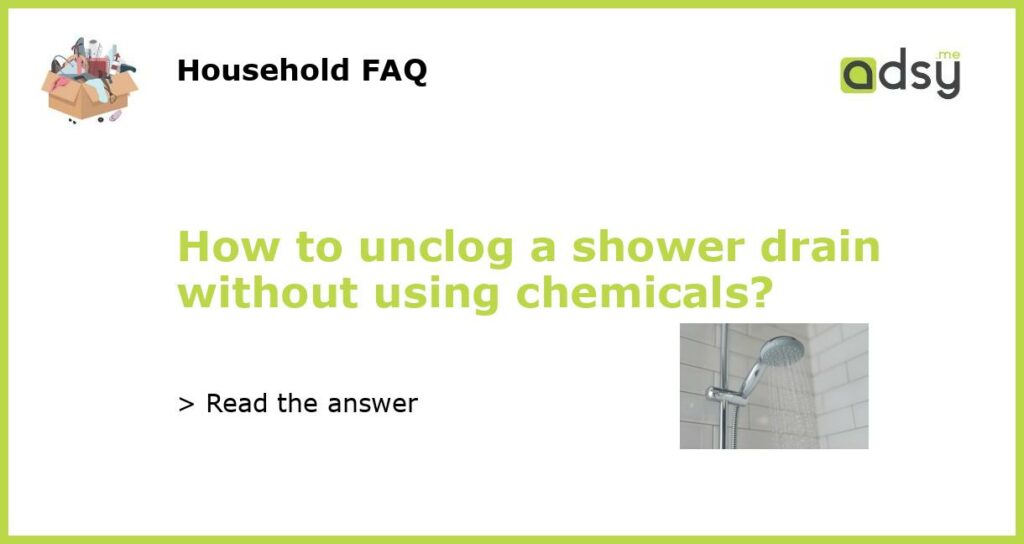Use a Plunger
One way to unclog a shower drain without using chemicals is by using a plunger. The plunger creates pressure that can dislodge the clog and allow the water to flow freely again.
To use a plunger, start by removing the drain cover or stopper. This will allow you to have direct access to the drain opening. Next, fill the shower with enough water to cover the bottom of the plunger. Place the plunger over the drain hole, making sure it creates a tight seal.
Begin plunging up and down vigorously. This will create suction and pressure that can help loosen and remove the clog. After a few plunges, check if the water is draining properly. If not, continue plunging until the clog is cleared.
Use a Drain Snake
If the plunger doesn’t work, another method to unclog a shower drain without using chemicals is by using a drain snake, also known as a plumbing auger. A drain snake is a long, flexible tool that can reach deep into the pipes to remove clogs.
To use a drain snake, insert one end into the drain opening and keep pushing it further until you feel resistance. At this point, you have likely reached the clog. Rotate the snake clockwise to break up the clog and pull it out. Continue doing this until the water starts to flow freely again.
It is important to be careful when using a drain snake to avoid damaging the pipes or getting the snake stuck. If you are unsure about how to use a drain snake, it is best to consult a professional plumber.
Use Baking Soda and Vinegar
Baking soda and vinegar can also be used to unclog a shower drain without using chemicals. Baking soda is a natural deodorizer and can help break up clogs, while vinegar has acidic properties that can dissolve stubborn blockages.
To use baking soda and vinegar, start by pouring half a cup of baking soda down the drain. Follow it up with half a cup of vinegar. You will likely hear a fizzing sound, which is a reaction between the two substances that helps break up the clog.
After letting the mixture sit for about 15 minutes, pour hot water down the drain to flush away the loosened debris. This method may need to be repeated a few times for stubborn clogs.
Clean the Drain Cover
Oftentimes, the cause of a shower drain clog is a buildup of hair and other debris on the drain cover. Cleaning the drain cover can help improve drainage and prevent future clogs.
To clean the drain cover, start by removing it from the drain opening. Use a pair of tweezers or a small brush to remove any hair or debris that may be trapped on the cover. You can also soak the drain cover in warm, soapy water to remove any buildup.
After cleaning the drain cover, place it back in the drain opening and test the water flow. If the water is still not draining properly, you may need to use one of the other methods mentioned above to remove the clog.
Preventing Future Clogs
After successfully unclogging your shower drain, it is important to take preventive measures to avoid future clogs. Here are a few tips:
- Install a drain cover or strainer to catch hair and debris before it enters the drain.
- Regularly clean the drain cover to prevent buildup.
- Avoid pouring grease or oil down the drain, as it can solidify and cause clogs.
- Flush the drain with hot water once a week to help break up any potential clogs.
- If you notice slow drainage, address the issue promptly to prevent further clogs.
By following these tips and utilizing the methods mentioned above, you can unclog your shower drain without relying on chemical-based solutions. Remember, if the clog persists or if you are unsure about how to handle it, it is always best to consult a professional plumber.






